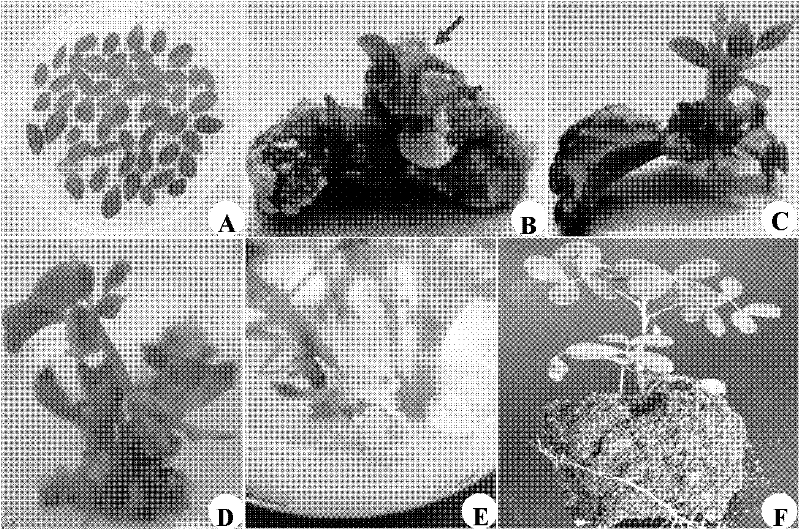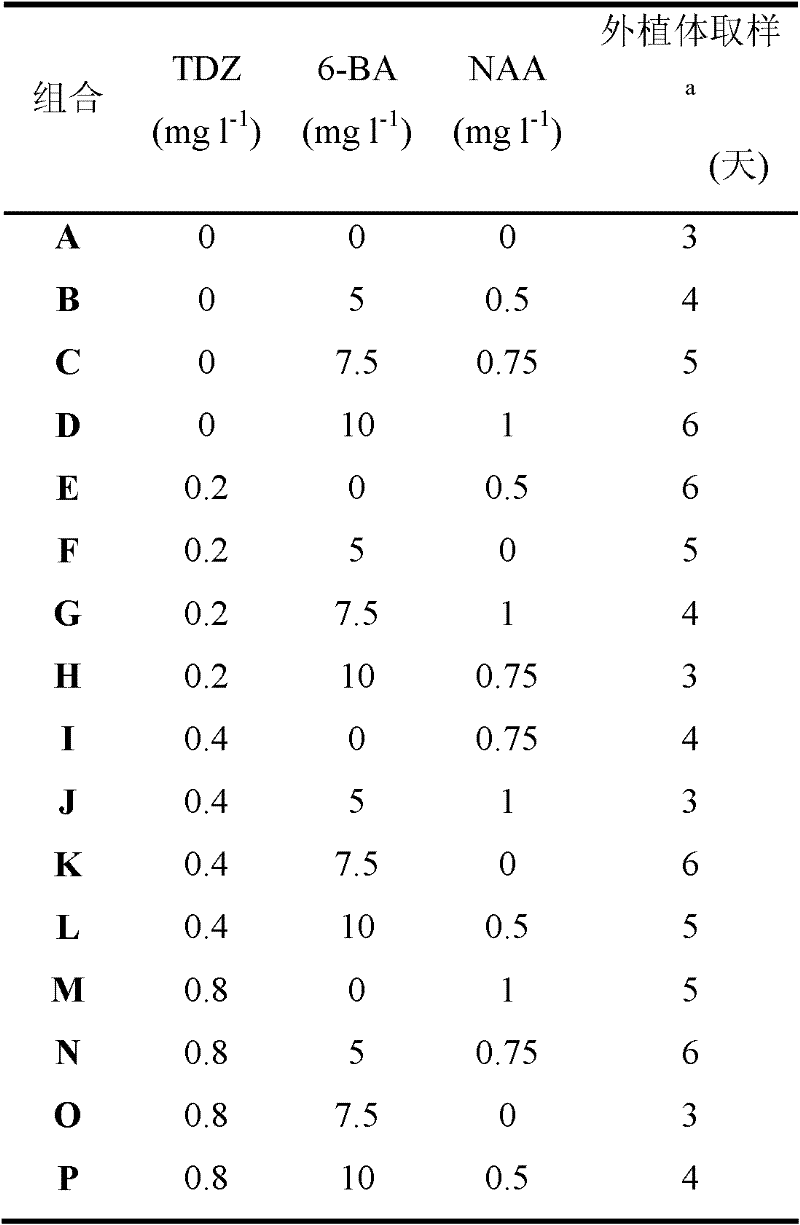Method for establishing peanut regeneration system with young leaf as explant
A technology of explants and peanuts, applied in the biological field, can solve problems such as low regeneration efficiency and achieve good growth effect
- Summary
- Abstract
- Description
- Claims
- Application Information
AI Technical Summary
Problems solved by technology
Method used
Image
Examples
Embodiment 1
[0028] 1. Determination of bud induction medium and elongation medium using young leaves as explants
[0029] 1. Shell the peanuts, place them in 75% ethanol for 1 minute, discard the ethanol, place them in 0.1% mercuric chloride for 4 minutes, wash them with sterilized water for 3 times, place them on sterile paper until they are dried;
[0030] 2. Use a sterile scalpel to separate the two cotyledons of the peanut, place the cotyledon containing the complete embryo on the basic medium, and cultivate under light;
[0031] 3. Select young and young leaves that have been cultivated for different times, cut off the leaf margins, and place them on the bud induction medium (Table 1) containing TDZ, 6-BA and NAA. left and right explants;
[0032] Table 1 Orthogonal experiment design of bud induction medium
[0033]
[0034] a: Time from sowing to leaf clipping
[0035] 4. Select the young leaves that have been cultivated for 5 days, cut off the leaf margins, place them face up...
PUM
 Login to View More
Login to View More Abstract
Description
Claims
Application Information
 Login to View More
Login to View More - R&D
- Intellectual Property
- Life Sciences
- Materials
- Tech Scout
- Unparalleled Data Quality
- Higher Quality Content
- 60% Fewer Hallucinations
Browse by: Latest US Patents, China's latest patents, Technical Efficacy Thesaurus, Application Domain, Technology Topic, Popular Technical Reports.
© 2025 PatSnap. All rights reserved.Legal|Privacy policy|Modern Slavery Act Transparency Statement|Sitemap|About US| Contact US: help@patsnap.com



